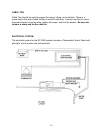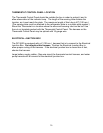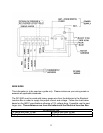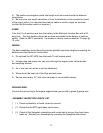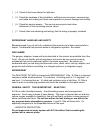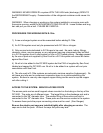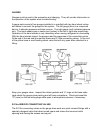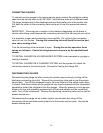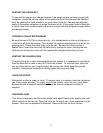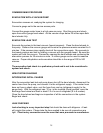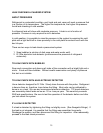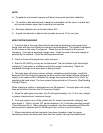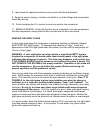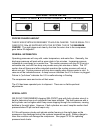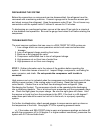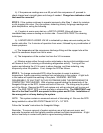
27
VENTING THE GAUGE SET
To connect the gauges to a charged system if the gauge set has not been purged with
refrigerant, attach the service valves to the system and vent the hoses at the manifold
body by opening the hand wheels to an open center hose for a few seconds allowing
some of the system refrigerant to purge the hoses of air. If the center hose is fitted with
a check valve it will not be purged and must be purged with the refrigerant supply before
introducing charge.
TAPPING A CAN OF REFRIGERANT
Be sure the can of R-134a is clean and dry. Any contaminants on the top of the can or
in the hose will enter the system. Turn the can tap valve counterclockwise to retract the
piercing point. Thread the valve body on to the can. Be sure the rubber gasket is
seated. Next, screw the valve into the valve body, closing the valve, piercing the can.
Opening and closing the valve will now regulate the refrigerant flow from the can.
VENTING THE CHARGE HOSE
To avoid pulling air or other contaminants into the system, it is necessary to vent the air
from the hose that is used to carry R-134a to the system. To vent the hose, open the
can tap valve with the can upright (vapor) then loosen the center hose fitting at the
manifold. After several seconds of venting tighten the hose end fitting.
LIQUID OR VAPOR
Refrigerant is either a vapor or liquid. To supply vapor to a system, keep the refrigerant
can in the upright position. To supply liquid
to the system, invert the can, valve down.
Be sure the can is handled carefully to ensure the correct refrigerant condition is
supplied.
CHANGING CANS
Turn off the compressor and close the gauge hand wheel Remove the supply hose with
check valve from the can tap. Open the valve on the empty can. Some pressure may be
present. Wait until no pressure is observed. Remove the can tap from the can.



